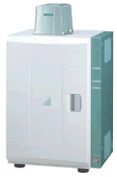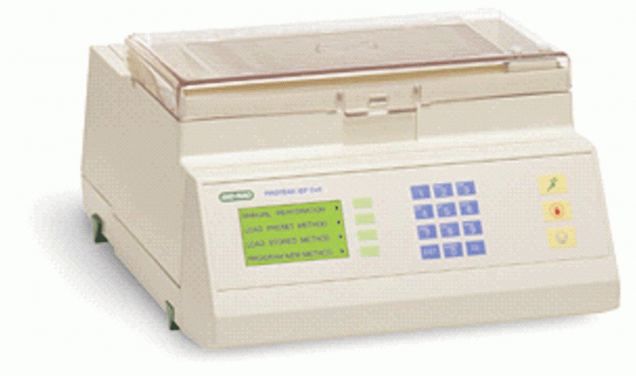Core Instruments
Use of the devices/equipment in this core is by request and organized by an online scheduling program
Blood/Cell Analyzers:
1. Liquid Scintillation Counter
DOM Location: 650 Albany Street, Rm 740 (X-740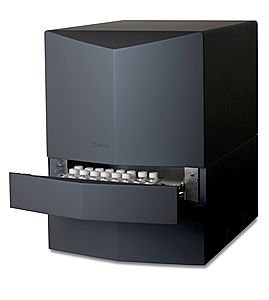 )
)
Instrument Manager: Deborah A. Siwik, Ph.D (dasiwik@bu.edu)
The LabLogic 300SL Liquid Scintillation Counter is the most advanced, transportable and user-friendly LSC available to count beta particles such as H3, C14, P32, S35 and others isotopes. The new LabLogic 300SL LSC with TDCR Technology employs Triple to Double Coincidence Ratio (TDCR) counting by three highly sensitive PMT’s and enables easy determination of sample counting efficiency, providing instant DPM results without the need for any internal or external standards. The counter is controlled from an external PC with an easy-to-use, yet sophisticated software program. Biosafety caution: The users or users’ PI must have BU radioactivity permit and will bring mini-vials (7mL) or standard 20 mL LSC vials in secondary containment such as a spill tray with spill mat on a push cart or in a sealed container. Two charge rates will be applied: 1. Short runs during daytime $11/15 min (5:30 am – 5:30 pm) 2. Slow long runs or large quantity samples overnight $2/15 min (5:30 pm – next day 5:30 am)
2. IDEXX Catalyst Dx Chemistry Analyzer
DOM Location: 650 Albany Street, Rm 830 (X-830)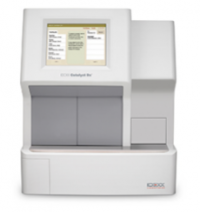
Instrument Manager: Matthew Au (mau115@bu.edu)
The analyzer is an automated machine that is capable of isolating, detecting and analyzing small-scale fluidic samples including blood, urine, other body fluids, solutions and liquid media. The fluidic samples can be from a variety of animals including mice, rats, NHP, rabbits, gerbils, guinea pigs, mini-pigs, dogs and cats. The instrument can analyze trace amounts of sample and provide 29 different chemistry parameters (including ions, lipids, sugars, common enzymes and metabolites) along with 6 calculated values with greater sensitivity and specificity.
3. Extracellular Flux Analyzer or Oxygen Analyzer
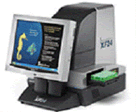 DOM Location: 650 Albany Street, Rm 830 (X-830)
DOM Location: 650 Albany Street, Rm 830 (X-830)
Instrument Manager: Albert Jones, MS (arjones@bu.edu)
The XF24 Extracellular Flux Analyzer from Seahorse Bioscience Inc. measures the rate of change of currently dissolved oxygen and pH in the media immediately surrounding living cells cultured in a microplate. It is designed for cell metabolism, drug and regulator studies. **The Charge for 2 plates has been set to $56. Please speak with Sam Sereda or Lynn Deng to arrange the pick up of the plates from the Central Lab**
4. Drew Scientific HemaVet 950FS Auto Blood Analyzer
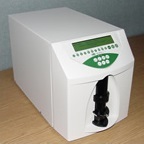 DOM Location: 650 Albany Street, Rm 830 (X-830)
DOM Location: 650 Albany Street, Rm 830 (X-830)
Instrument Manager: Matthew Au (mau115@bu.edu)
The HEMAVET 950FS can perform automated blood counts including; hemoglobin, hematocrit, white blood cells, platelets, differentials, and red blood cell indices for six animals. Parameters include: WBC, NE#, NE%, LY#, LY%, MO#, MO%, EO#, EO%, BA#, BA%, RBC, Hb, HCT, MCV, MCH, MCHC, RDW plus additional flagging for NRBC#, NRBC%, Platelet Count, MPV 3D cytograms : WBC subpopulations, RBCs, PLTs.
Spectrophotometers:
1. NanoQuant Multimode Microplate Reader 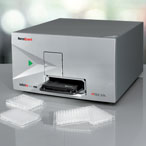
DOM Location: 650 Albany Street, Rm 510 (X-510)
Instrument Manager: Maggie Baker (mbaker6@bu.edu)
The Infinite 200 PRO NanoQuant by Tecan was developed specifically for absorbance applications (UV to NIR spectral range) with small sample size. It functions similarly as the NanoDrop UV/VIS, detecting DNA concentrations as low as 1ng/ul, but with the capability to identify as many as 16 trace samples simultaneously with the NanoQuant quartz plate (provided).
2. Tecan Infinite® M1000 Microplate Reader
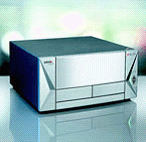 DOM Location: 650 Albany Street, Rm 810 (X-810)
DOM Location: 650 Albany Street, Rm 810 (X-810)
Instrument Manager: Jude Deeney, Ph.D (jdeeney@bu.edu)
The Infinite® M1000 from TECAN is a high-end multimode Microplate Reader with premium Quad4 Monochromators. The Reader is capable of monitoring UV and visible absorbencies and fluorescence of the samples held in the 96, 396 and other microplates. In addition, the Infinite® M1000 Reader is able to detect the following:
- Fluorescence resonance energy transfer (FRET)Time resolved fluorescence (TRF)
- Fluorescence intensity top and bottom readingFlash luminescence
- Glow luminescence
- Dual color luminescence including filter for BRET1 & BRET 2 applications)
- Kinetic studies
The flexibility, sensitivity and speed are features of this newly designed optical instrument.
3. Nanodrop UV Visible Spectrophotometer
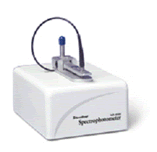 DOM Location: 700 Albany Street, Rm 527 (W-527)
DOM Location: 700 Albany Street, Rm 527 (W-527)
Instrument Manager: José J. Fuster (jjfuster@bu.edu)
The NanoDrop® ND-1000 UV-Vis Spectrophotometer is a new generation of spectrophotometer which enables highly accurate analyses of 1 ul samples for DNA, RNA, protein, pigments, whole uv-visible (220-700nm) spectrum and cell density tests with remarkable reproducibility.
Protein Readers & Imagers:
1. Luminex Magpix
DOM Location: 650 Albany Street, Rm 830 (X-830)
Instrument Manager: Matthew Au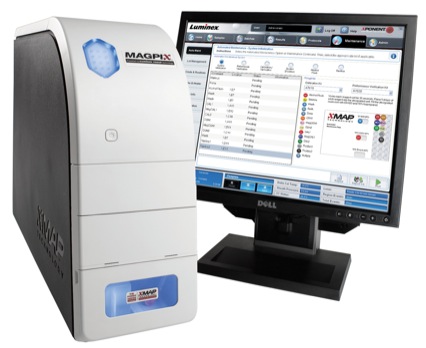 (mau115@bu.edu)
(mau115@bu.edu)
The Magpix is a versatile multiplexing platform capable of performing qualitative and quantitative analysis of proteins and nucleic acids in a variety of sample matrices. This system can perform up to 50 tests in a single well, greatly reducing sample input, reagents and labor while also improving productivity. The Magpix system features an innovative design based on CCD imaging technology that allows for a more compact, robust system. It’s also easy to operate and is supported by a broad menu of commercially available assay kits, as well as reagents to build your own assays.
2. Meso Scale Discovery (MSD) Sector Imager 2400A
DOM Location: 650 Albany Street, Rm 831 (X-831)
Instrument Manager: Matthew Au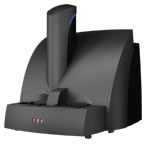 (mau115@bu.edu)
(mau115@bu.edu)
The MSD-SECTOR Imager 2400 uses an ultra-low noise charge-coupled device (CCD) camera with custom-designed telecentric lenses for rapid detection of all Meso Scale Discovery MULTI-ARRAY® or MULTI-SPOT® plates. Meso Scale Discovery MULTI-ARRAY® or MULTI-SPOT® plates utilize electrochemiluminescence to detect binding events on patterned arrays, and are ideal for applications requiring high information content and high throughput. Whether you are multiplexing biomarkers and cytokines or screening kinases, phosphoproteins, ubiquitin ligases, integrins or GPCRs, you will appreciate the simple no-wash formats and minimal consumption of reagents. The SECTOR Imager 2400 reader offers high sensitivity for single or multiple (up to 10) analyte assays involving many complex biological targets and compatible with virtually any biological matrix
qPCR Machines and Software:
1. 7900 HT Fast Real-Time PCR
DOM Location: 650 Albany Street, Rm 830 (X-830)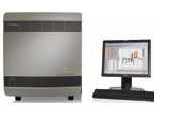
Instrument Manager: Matthew Au (mau115@bu.edu)
The 7900 HT Fast Real-Time PCR system by Applied Biosystems is a high-throughput real-time PCR system that detects and quantitates nucleic acid sequences with the capabilities to run a 96- or 384-well plate, a fast PCR option to reduce run times (96-well fast plate =35 min, 384-well fast plate=55 min), and can detect as low as 10 starting copies of human genomic DNA.
*NOTE FOR 384 USE: Please contact instrument manager 24 hours in advance to make sure correct block is installed.
2. StepOne Plus 96-Well Real-Time PCR
DOM location: 650 Albany Street, Rm 830 (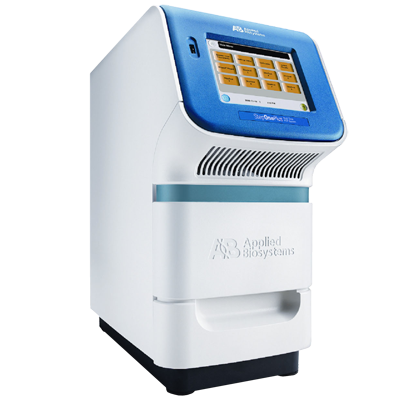 X-830)
X-830)
Instrument Manager: Matthew Au (mau115@bu.edu)
The StepOne™ Plus 96-well Real-Time PCR System made by Applied Biosystems is the latest entry-level real-time PCR instrument used to amplify and quantify a targeted DNA or RNA molecule in a sample. Download the StepOne™ Plus v2.3 software onto your personal computer! Just follow the link below:
3. Primer Express Software v3.0
DOM location: 650 Albany Street, Rm 830 (X-830)
Instrument Manager: Lynn Lingyi Deng, Ph.D (lynndeng@bu.edu)
The Primer ExpressR Software allows you to design your own primers and probes using TaqManR and SYBR Green I dye chemistries for gene quantitation and allelic discrimination (SNP) real-time PCR applications.
Luminescent and Gel Imagers:
1. LAS-4000 Luminescent Imager (3 Sets)
DOM locations:
- X-410 with Instrument Manager: Isabel Dominguez, Ph.D. (isdoming@bu.edu)
- R-305 with Instrument Manager: Maria Ramirez, Ph.D. (mramirez@bu.edu)
- X-840 with Instrument Manager: Wei Qiu, MD (qiuwei@bu.edu)
The LAS-4000 Luminescent Image Analyzer by FujiFilm captures images of agarose and polyacrylimide gels, Western blot, TLC and small animals. High sensitivity and resolution of in vivo imaging is also possible with small animals such as a mouse.
2. Bio-Rad Fluor-S MultiImager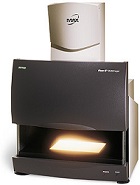
DOM Location: 650 Albany Street, Rm 830 (X-830)
Instrument Manager: Lynn Lingyi Deng, Ph.D (lynndeng@bu.edu)
The Bio-Rad Fluor-S MultiImager is a quantitative imaging system for capturing high-resolution digital images from single- and multiple-color fluorescence, chemiluminescence, chemifluorescence and colorimetric samples. Samples can be illuminated using either UV or white light.
3. Bio-Rad GS-525 Molecular Phosphor-Imaging System
DOM Location: 650 Albany Street, Rm 830 (X-830)
Instrument Manager: Lynn Lingyi Deng, Ph.D (lynndeng@bu.edu)
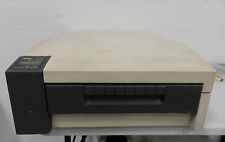 The PhosphorImager quantitative imaging device from Bio-Rad uses storage phosphor technology as a faster, more accurate replacement for x-ray film in life science imaging applications. It is about ten times more sensitive than film exposures. For 14C, 2dpm/mm2/hour will give a signal that is at least twice that of the background. The Bio-Rad Phosphor Imager GS-525 is controlled by a Macintosh computer and is capable of detecting Northern Blot, Western Blot, TLC, wet gels and other radioactive images.
The PhosphorImager quantitative imaging device from Bio-Rad uses storage phosphor technology as a faster, more accurate replacement for x-ray film in life science imaging applications. It is about ten times more sensitive than film exposures. For 14C, 2dpm/mm2/hour will give a signal that is at least twice that of the background. The Bio-Rad Phosphor Imager GS-525 is controlled by a Macintosh computer and is capable of detecting Northern Blot, Western Blot, TLC, wet gels and other radioactive images.
Chromotography Instruments:
1. HP 6890 Gas-Chromatograph/5973 Mass Spectrometer (Fatty Acid and Monosaccharide Analysis)
DOM Location: 650 Albany Street, Rm 830 (X-830)
Instrument Manager: Lynn Lingyi Deng, Ph.D (lynndeng@bu.edu)
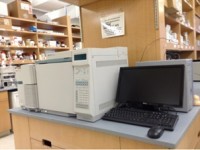 Gas chromatography-mass spectrometry (GC-MS) combines the separatory features of gas-liquid chromatography with the particulate mass identification of mass spectrometry to identify substances within a test sample. The 6890/5973 GC/MS model formerly of Agilent (formerly HP) is useful for detecting volatile molecules up to 1000 Daltons and is good for analyzing small molecules such as fatty acids, lipids, monosaccharides, amino acids and neurotransmitters.
Gas chromatography-mass spectrometry (GC-MS) combines the separatory features of gas-liquid chromatography with the particulate mass identification of mass spectrometry to identify substances within a test sample. The 6890/5973 GC/MS model formerly of Agilent (formerly HP) is useful for detecting volatile molecules up to 1000 Daltons and is good for analyzing small molecules such as fatty acids, lipids, monosaccharides, amino acids and neurotransmitters.
2. Bio-Rad Fast-Protein Liquid-Chromatography
DOM Location: 650 Albany St, Rm 830 (x-830)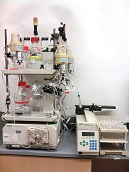
Instrument Manager:Lynn Lingyi Deng, Ph.D (lynndeng@bu.edu)
Fast protein liquid chromatography (FPLC), is a form of liquid chromatography similar to high-performance liquid chromatography that is used to separate or purify proteins and other polymers from complex mixtures. FPLC system is a complete system for laboratory scale chromatographic separations of proteins and other biomolecules. Bio-Rad BioLogic Duo Flow FPLC Systems are full-featured, gradient chromatography systems which specifically are designed for the high resolution purification of proteins, peptides and other biomolecules where the recovery of biological activity is of primary concern.
3. Liquid-Chromatograph Mass-Spectrometer, Agilent/Bruker
DOM Location: 650 Albany Street, Rm 830 (X-830)
Instrument Manager: Lynn Lingyi Deng, Ph.D (lynndeng@bu.edu)
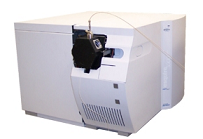 The LC/MS is ideal for the analysis of non-volatile and thermally-labile compounds, protein mass determination and digest analysis and peptide sequencing. The LC/MS is coupled to a Bruker Esquire 3000 LC ESI-Ion-Trap mass spectrometer. The Esquire 3000 is complete with ESI source, and PC workstation with Esquire software. The Esquire 3000 has a standard mass rnage of 50-3,000 m/z, Standard resolution mode resolving 2+ ions @ 13,000 u/sec, Maximum resolution mode resolving 3+ and 4+ ions @ 1,650 u/sec – Extended mass range 200- 6,000 m/z @ 27,000 u/sec.
The LC/MS is ideal for the analysis of non-volatile and thermally-labile compounds, protein mass determination and digest analysis and peptide sequencing. The LC/MS is coupled to a Bruker Esquire 3000 LC ESI-Ion-Trap mass spectrometer. The Esquire 3000 is complete with ESI source, and PC workstation with Esquire software. The Esquire 3000 has a standard mass rnage of 50-3,000 m/z, Standard resolution mode resolving 2+ ions @ 13,000 u/sec, Maximum resolution mode resolving 3+ and 4+ ions @ 1,650 u/sec – Extended mass range 200- 6,000 m/z @ 27,000 u/sec.
Electrophoresis Instruments:
1. BD Proteomics Free Flow Electrophoresis System
DOM Location: 650 Albany St, Rm 831 (X-831)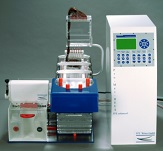
Instrument Manager: Lynn Lingyi Deng, Ph.D (lynndeng@bu.edu)
The Free Flow Electrophoresis System by BD is the only separation system that provides high-resolution fractionation and purification across an amazingly broad mass range- from peptides and proteins to cellular organelles. The FFE separates under native conditions to preserve biological activity and sample integrity. Continuous sample application provides enrichment of low-abundance organelles and organellar proteins.
2. Bio-Rad 2-Dimentional PAGE Apparatus
DOM Location: 650 Albany Street, Rm 830 (X-830)
Instrument Manager: Matthew Au (mau115@bu.edu)
1. PROTEAN IEF Cell
The PROTEAN IEF cell is used for running IPG strips or iso-electric focusing (IEF) polyachrylamide gel electrophoresis (PAGE). The cell can be used to run multiple IEF strips, with temperature control (10–25°C) and gel developing systems. The PROTEAN IEF cell is a key component of the Expression Proteomics line of products designed to meet the needs of high-throughput labs and occasional users for IEF PAGE. 2. PROTEAN II Gel Electrophoresis Apparatus The PROTEAN II Apparatus can be used for proteins, DNA and carbohydrates separation either by native PAGE or SDS-PAGE applications with regular sized gels. PROTEAN II Apparatus can also be used for the 2nd dimension of the 2-dimentional PAGE (after IEF PAGE).
All Other Instruments and Services:
1. Bio-Rad Supply Center
DOM Location: 650 Albany Street, Rm 831 (X-831)
Instrument Manager: José Cacicedo, Ph.D (cacicedo@bu.edu)
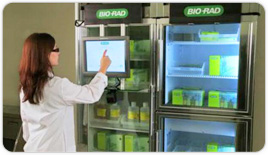 Never have to wait for an order to arrive to complete your experiments! With a Bio-Rad Supply Center, you always have what you need on hand, so your research is never interrupted. Bio-Rad’s on-site stocking program provides consumables and reagents for molecular biology, genomics, proteomics, and other research areas. We stock protein standards, PCR reagents, precast gels, buffers, and other frequently used lab supplies. You no longer have to worry about paying for shipping/handling and will only need to pay for the products you use. In order to register to use the Supply Center please click here
Never have to wait for an order to arrive to complete your experiments! With a Bio-Rad Supply Center, you always have what you need on hand, so your research is never interrupted. Bio-Rad’s on-site stocking program provides consumables and reagents for molecular biology, genomics, proteomics, and other research areas. We stock protein standards, PCR reagents, precast gels, buffers, and other frequently used lab supplies. You no longer have to worry about paying for shipping/handling and will only need to pay for the products you use. In order to register to use the Supply Center please click here
2. Savant ISS 100 Integrated SpeedVac System
DOM Location: 650 Albany Street, Rm 830 (X-830)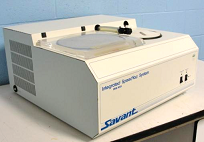
Instrument Manager: Matthew Au (mau115@bu.edu)
Compact, fully integrated systems designed specifically for DNA and RNA applications. The DNA-series SpeedVac vacuum concentrators deliver rapid and efficient concentration and drying of DNA/RNA samples, nucleic acids, PCR preps and synthetic oligos. These easy-to-use, quiet integrated systems are designed to accommodate microcentrifuge tubes or shallow-well microplates. A built-in, oil-free PTFE pump produces the vacuum required for rapid drying of samples with clean vacuum and no regular maintenance required.

